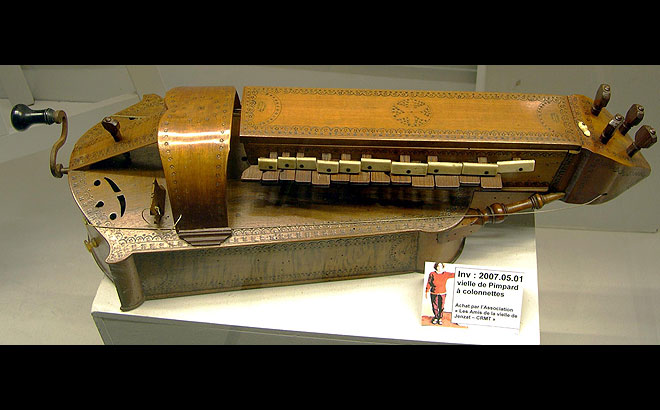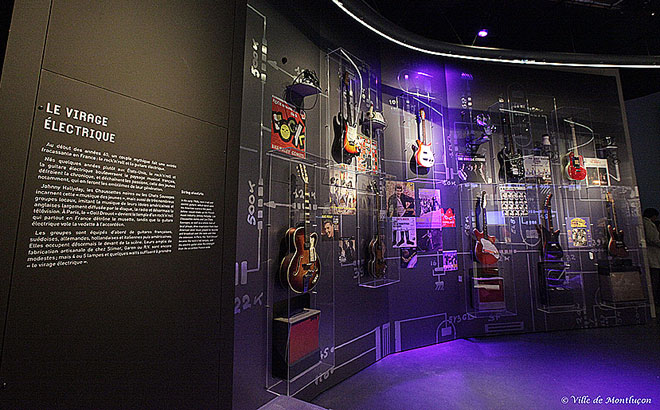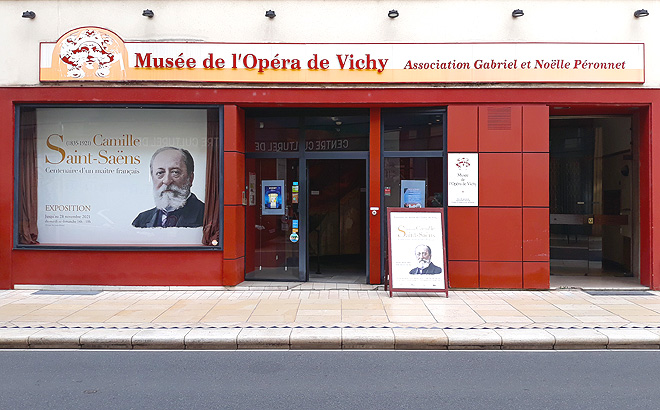The Maison du luthier / Museum tells the story of the luthiers of Jenzat, makers of hurdy-gurdies and bagpipes, repairers of accordions, saxophones, flutes, drums, merchants of clarinets, violins and mandolins in the Sioule valley, in the heart of Bourbonnais. The museum presents and preserves the instrumental heritage of traditional French music. It occupies the former house of Jacques Antoine Pajot (1845-1920), located in the quarter of the hurdy-gurdy makers in Jenzat: the world capital of the hurdy-gurdy. Collection of hurdy-gurdies, bagpipes and other instruments; collection of tools used by luthiers; hurdy-gurdy workshop; brass workshop. Study room ; documentary terminals; auditorium with films on the bill and the game of the hurdy-gurdy. Hurdy-gurdies have been made in Jenzat since 1795.
Animation :
During the season // Nuggets Under the Microscope // Saturdays at 5 p.m.
A detailed exploration of an astonishing object from the collections, followed by a guided tour of the museum.
In July and August // Tradimardis // 5 p.m.
Two or three musicians rehearse traditional music from the collections.
– Tuesday, July 1st:
Val de Sioule repertoire by Jean-Pierre Gournillat (hurdy-gurdy) and Jean-Fr. Chassaing (accordion).
– Tuesday, July 8th:
Auvergne and Bourbonnais repertoire by Pascal Chambriard and J.-Fr. Chassaing (Béchonnet bagpipes, old tuning fork).
– Tuesday, July 15th:
“Je chante au musée”: Let’s sing traditional songs with Anthony Dumas.
– Tuesday, July 22:
“Montagne Bourbonnaise” repertoire by Jean-Pierre Gournillat (hurdy-gurdy), Pascal Chambriard (bagpipes), and J.-Fr. Chassaing (accordion).
– Tuesday, July 29:
Traditional Cajun music repertoire with the Trio Confluence: Jean-Luc Rongère (guitar), Frédéric Nebout (clarinet), Didier Péronnet (accordion and triangle).
– Tuesday, August 5:
Auvergne Mountains repertoire by Eric Cousteix (violin) and J.-Fr. Chassaing (accordion).
– Tuesday, August 19:
Livradois repertoire by Laurent Boithias (hurdy-gurdy, vocals, accordion).
– Tuesday, August 26:
Auvergne Repertoire (+) by Céline Rosnet (accordion) and Fabrice Giori (bagpipes).
In August and September // Lectures // 5 p.m.
– Sunday, August 10, by Cassandre Balosso-Bardin, “A Strange Bagpipe in New York: Provenance, Origin, and Mystery.”
In this lecture, Cassandre Balosso-Bardin will open with a presentation on the Metropolitan Museum of Art’s bagpipe collection in New York, which she studied for a year in 2022-23. She will then focus on the French bagpipe collection, before finally examining a bagpipe that has generated much discussion. This bagpipe is a goat-headed bagpipe that reportedly resembles a Béchonnet bagpipe. But is it really one? Can we know for sure? And how did it end up across the ocean at the end of the 19th century?
Cassandre Balosso-Bardin is the founder of the International Bagpipe Organization and co-founder of International Bagpipe Day (March 10). She teaches at the University of Leuven (Belgium), where she holds the chair of cultural musicology. Cassandre is also a musician, playing the bagpipes and recorder.
– Sunday, August 24th, by Jean-François Chassaing, “Joseph Pajot: Meilleur Ouvrier de France” (Best Craftsman of France).
A great luthier in Jenzat was recognized among the Meilleurs Ouvriers de France (Best Craftsman of France) in 1924, the year the competition was created. Joseph Pajot was then a seasoned maker who had been crafting hurdy-gurdies for over forty years. Beyond his sophisticated instruments, we will examine his biography in light of documents recently acquired by the museum, as well as his dissemination techniques used in the service of a very popular music.
Jean-François Chassaing holds a doctorate in ethnology (Thesis: The Bagpipe Tradition in Lower Auvergne and South Bourbonnais, University of Lyon 2), and has been running the Jenzat Museum for forty years.
– Sunday, September 7th, by Eric Cousteix, “Bourrée Dancers in Saint-Donat en Artense” (Bourrée Dancers in Saint-Donat en Artense). Alongside their musical research, the Brayauds sought to meet and film traditional bourrée dancers to understand their style of dancing, far removed from folkloric stereotypes.
Thus, in the 1990s, Eric Cousteix organized several events in Saint-Donat, inviting the country’s most renowned bourrée dancers. He invites you to watch some excerpts from these films to learn more about these dancers and their art of dance.
Eric Cousteix is a teacher, musician-researcher, and violin specialist in the Auvergne region.
– Sunday, September 21st by Agnès Unterberger, “The Chanal Ballroom at the Heart of the Arts et Métiers District: Social and Musical Dynamics of a Popular Establishment (Paris, 1893-1908).”
As part of the European Heritage Days.
A Parisian merchant and dance hall owner of Aveyron descent, Léon Chanal developed his business in the 3rd arrondissement at the turn of the 19th century. What role did this establishment play in the collective life and imagination of the Arts et Métiers district? We will examine the uses made of these places, occupied by different groups and audiences, at the intersection of social and political history and the history of popular music, marked by a strong expansion of leisure activities in Paris at the end of the 19th century.
Agnès Unterberger is a doctoral candidate at the Center for Social History (CHS) of Contemporary Worlds, University of Paris 1 Panthéon-Sorbonne. His thesis project focuses on the Parisian production of Auvergne music between the end of the 19th century and the 1930s (practices, circulations and performances).
Located in the heart of the medieval city of Montluçon, the MuPop, located in a building with innovative architecture combining renovated private mansions and contemporary constructions, offers a spectacular scenography and interactive installations to pay homage to the popular music of yesterday and today. today.
Instruments and objects related to popular music in France from 1750 to the present day, from bagpipes to electric guitars, including brass bands, balls, jazz…; musical repertoires, link between music and society (mode of learning, transmission, relationship to the body, to dance, digital music). The visit is done with a mobile listening system.
Created in 2002 thanks to the Noëlle and Gabriel Peronnet Foundation, the Musée de l’Opéra collects, preserves, and showcases the archives of the Théâtre du Grand Casino de Vichy (now the Palais des Congrès-Opéra). Posters, photographs, costumes, projects and set designs, programs, and newspapers tell the story of an exceptional artistic life.
The only theater museum in the provinces, it is considered by the Bibliothèque Nationale to be one of the richest collections in Europe due to the quality, quantity, and rarity of the archives it holds. These archives were relatively difficult to locate, collect, and organize from the end of 1987 until the museum’s installation in 2001-2002.



